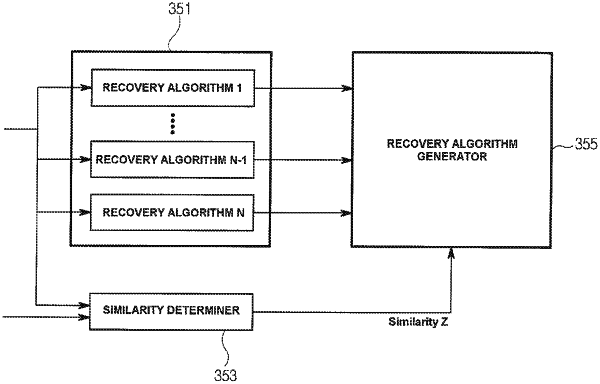| CPC G05B 23/0259 (2013.01) [G05B 23/0221 (2013.01); G06N 20/00 (2019.01); G06N 20/20 (2019.01)] | 18 Claims |

|
1. A system for restoring a fault signal in a plant, the system comprising:
a data processor receiving from the plant a learning signal set X including only tags of normal signals, a signal set U comprising a plurality of tags and including a fault signal, and an input S including information on a tag to be recovered, the data processor configured to
generate a signal subset U* by removing specific tags from the signal set U, the specific tags constituting a first tag group,
generate a first learning signal subset X* by removing tags of a second tag group from the learning signal set X such that the first learning signal subset X* contains only signals for tags other than the first tag group, the tags of the second tag group disposed at positions corresponding to the specific tags of the first tag group, and
process the learning signal set X to generate a second learning signal subset Xs containing only signals for the first tag group;
a modeling unit receiving the first learning signal subset X* and the second learning signal subset Xs from the data processor, modeling unit configured to
extract feature information F from the first learning signal subset X*, and
generate recovery information P on a plurality of recovery models usable for restoring the fault signal, the recovery information P generated based on the first learning signal subset X*, the second learning signal subset Xs, and the feature information F; and
a recovery unit receiving the signal subset U*, the second learning signal subset Xs, and the first learning signal subset X* from the data processor and receiving the feature information F and the recovery information P from the modeling unit, the recovery unit configured to recover normal signals for the first tag group by generating an optimum recovery algorithm, the optimum recovery algorithm generated based on
the signal subset U*, the second learning signal subset Xs, and the first learning signal subset X* received from the data processor,
the feature information F and the recovery information P received from the modeling unit, and
a degree of similarity Z between the signal subset U* and the first learning signal subset X*, wherein the signal subset U* and the first learning signal subset X* are configured as n×m matrices, and wherein the similarity Z is defined as:
 where α is a positive value and ns is the number of tags to be recovered.
|